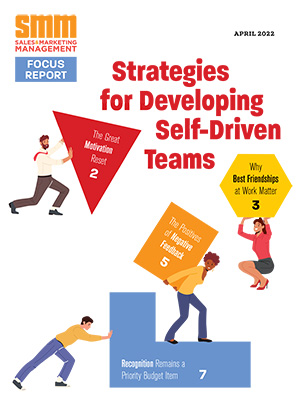There are no shortage of uses for market and sales potential estimates. Among the most popular:
• Deciding whether to enter a new market.
• Determining markets with the greatest potential for the sales force.
• Determining the number of salesmen, reps, or distributors needed to
adequately cover an area.
• Identifying boundaries for sales territories.
• Establishing quotas for the sales force.
• Checking the effectiveness of the sales force.
• Deciding whether to invest in a new product.
• Use in a business or turnaround plan.
• Determining share of market.
• Use in a growth plan.
There are many methods to estimate market and sales potential that are complex, expensive, and take a lot of time. They also happen to be unnecessary. What follows are five simple methods that can be effectively employed by any company.
Before we get to those, however, some simple definitions:
Market potential. The total potential sales of a product within a given period of time and for a given geographic area. This is an optimum figure representing the total sales of all prospects that could use the product. Market potential is a macro number and is only used as a benchmark. It is always higher than sales potential.
Sales potential. This is the share of market potential allocated to a specific geographic area for a particular product, or the share of the total market potential that a manufacturer can reasonably expect to sell. The overall figure is always optimistic and must be pruned down by other factors.
Sales quota. Often, this is the percentage of sales potential assigned to a particular rep or territory.
Sales projection. Using historical sales to project future sales.
With those definitions addressed, onto the methods:
1. Market potential by number of prospects. Generally, this is determining a macro market size by the total number of prospects. This step requires accessing a database such as the Dun & Bradstreet’s Zap Data to find out how many prospects are in a specific SIC or NAICS code market segment.
Say, for instance, the entire food industry has 44,988 plants. But the market segment for natural and processed cheese shows a total of 332 plants in the U.S., of all sizes of businesses. This is an optimum figure that tells you and your client all of the possible prospects that might be able to use the product (without any qualification).
2. Simple sales potential. Sales potential are the prospects as a share of the market potential that might be able to buy your products. The more you can qualify this number, the more accurate the sales potential figure.
Let’s say your product is a specific type of machinery for cheese plants, and you’ve identified a total of 801 cheese plants. This number can be narrowed down by the size of the prospect company and a more specific type of cheese product.
3. Simple sales potential using lead to quote ratios. Manufacturers of industrial products that do quotation analysis and keep track of their leads, quotes, and orders in a database can use lead to order ratios to make even more accurate estimates of sales potential.
Going back to cheese: Let’s say the total number of plants making processed and natural cheese is 332 plants, but the number of cheese plants with more than 50 employees is 210 plants. Our lead to quote analysis from the database records show approximately five percent of the companies who inquired will ask for a quote, if you contact every one of them by phone and qualify the buyers. For this example, that means 10-11 plants. If the company closure rate on quotes is 65 percent, then about 7 of the 11 plants could be actual purchasers.
4. Sales potential using plant purchases. This type of sales potential estimate works best for industrial products that wear out and must be replaced inside a production process on a regular basis. By way of example: industrial cutting blades used in sawmills in a regional market. The first step in using the plant purchases method is to find out the number and size of sawmills in a geographic region. The size or type of mill can be determined by number of employees, number of shifts, or production (measured by an output figure, such as board feet per year). This is an important consideration, because different sizes of plants use different amounts of cutting blades.
The next step is to qualify the plants in terms of their purchases of certain types of blades. Most of the plants are easily qualified because they are customers of the cutting blade manufacturer, and the sales records should show the quantity and models purchased. The rest of the sawmills can be qualified by calling the buyers on the phone.
If your client has a good customer database it is easy to sort yearly sales by size of customer and then calculate a purchase average. The last step is to multiply the number of qualified plants by the average purchases to find the sales potential of the three different sawmill segments of the market.
5. Sales potential using phone qualification and telemarketing. This type of sales potential estimate works best for capital products that must be quoted. Our example is a pallet transfer machine that can shift loads of meat products from one type of pallet to another.
The first step in using this method is to determine the appropriate NAICS or SIC code. The second step is to find the number of prospects. Because production capacity is a factor, the prospect companies must be over 50 employees in size.
To qualify these prospect plants, we need to find out the type of production line, whether they bring in raw meat products, and if they use plastic pallets inside the production process.
Every prospect is called, and if they do not meet all three requirements, they are eliminated. If the prospect is qualified, the respondent is asked the name, phone number, and fax number of the employee who handles capital equipment. That person is faxed a flyer explaining the virtues of the machine. The fax is then followed up by a phone call to the prospective buyer to see if they are interested, want a quotation, or might have a budget for this kind of equipment.
Mike Collins is the author of “Saving American Manufacturing” and its companion book, the “Growth Planning Handbook for Manufacturers.” To learn more about the author or these titles, visit www.mpcmgt.com.
Determining Market and Sales Potential
Get our newsletter and digital focus reports

Stay current on learning and development trends, best practices, research, new products and technologies, case studies and much more.

